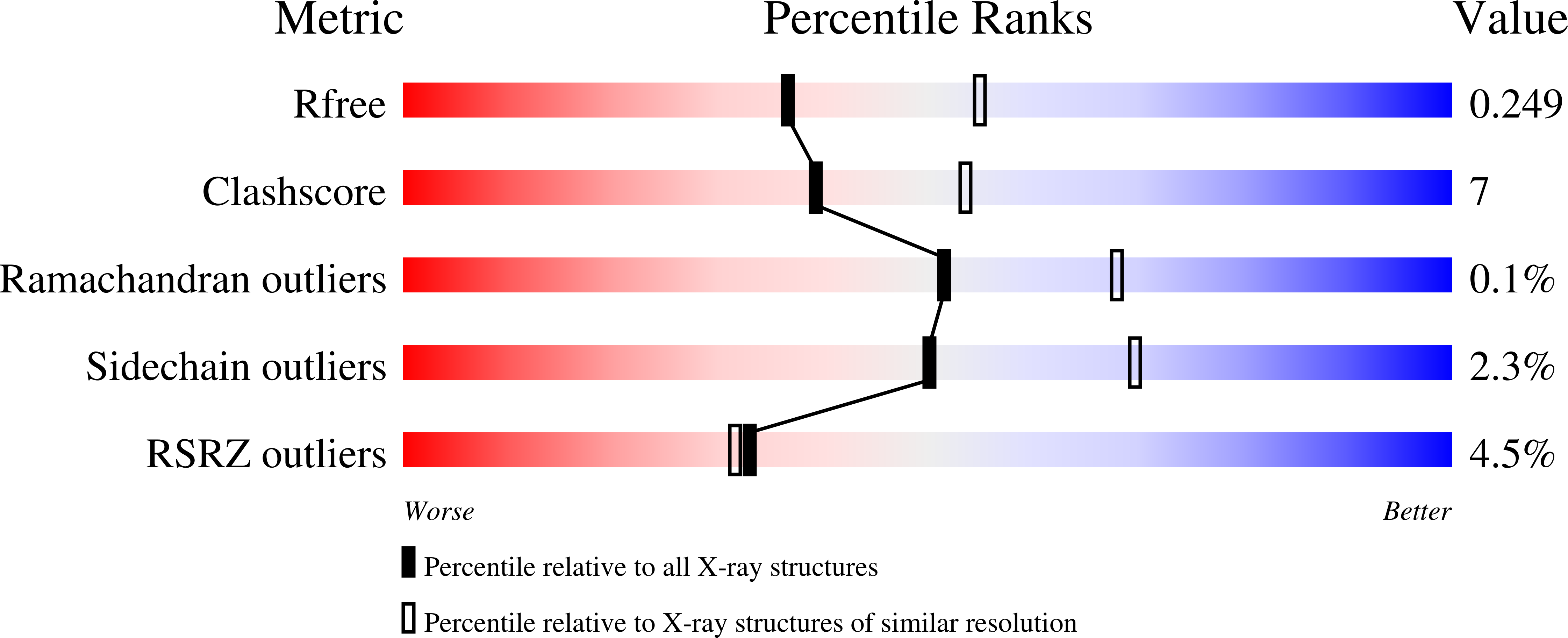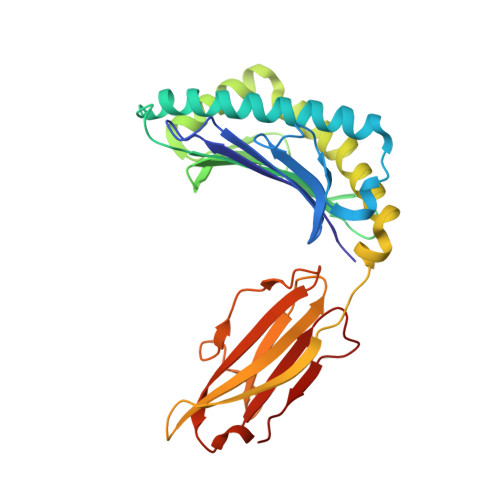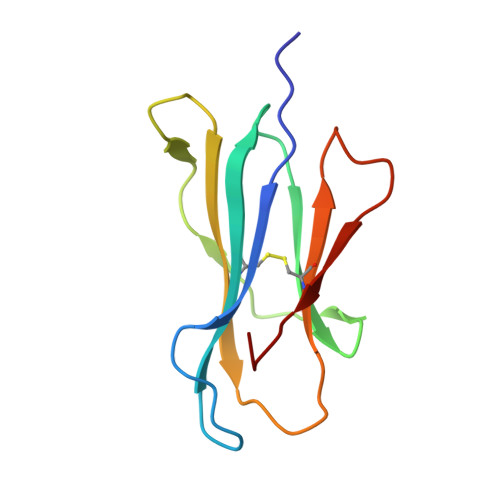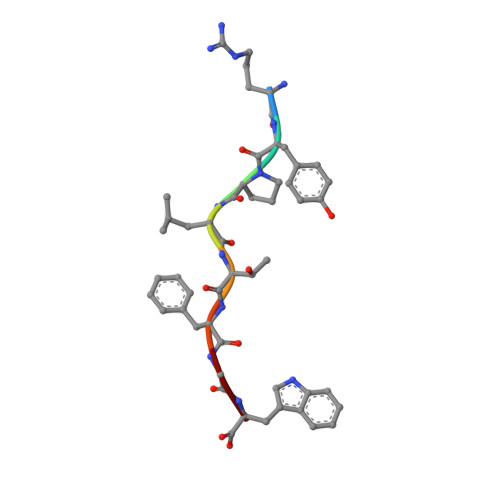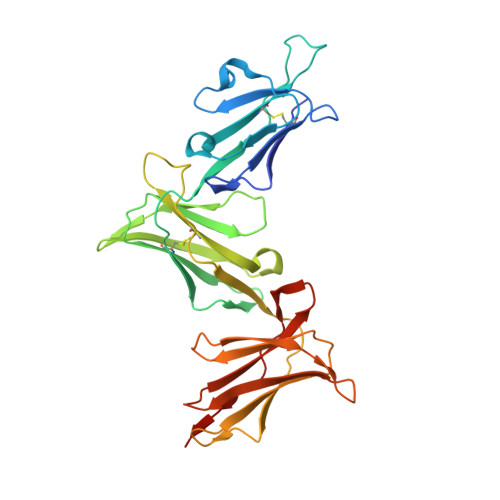The Role of the HLA Class I alpha 2 Helix in Determining Ligand Hierarchy for the Killer Cell Ig-like Receptor 3DL1.
Saunders, P.M., MacLachlan, B.J., Widjaja, J., Wong, S.C., Oates, C.V.L., Rossjohn, J., Vivian, J.P., Brooks, A.G.(2021) J Immunol 206: 849-860
- PubMed: 33441440
- DOI: https://doi.org/10.4049/jimmunol.2001109
- Primary Citation of Related Structures:
7K80, 7K81 - PubMed Abstract:
HLA class I molecules that represent ligands for the inhibitory killer cell Ig-like receptor (KIR) 3DL1 found on NK cells are categorically defined as those HLA-A and HLA-B allotypes containing the Bw4 motif, yet KIR3DL1 demonstrates hierarchical recognition of these HLA-Bw4 ligands. To better understand the molecular basis underpinning differential KIR3DL1 recognition, the HLA-A Bw4 family of allotypes were investigated. Transfected human 721.221 cells expressing HLA-A*32:01 strongly inhibited primary human KIR3DL1 + NK cells, whereas HLA-A*24:02 and HLA-A*23:01 displayed intermediate potency and HLA-A*25:01 failed to inhibit activation of KIR3DL1 + NK cells. Structural studies demonstrated that recognition of HLA-A*24:02 by KIR3DL1 used identical contacts as the potent HLA-B*57:01 ligand. Namely, the D1-D2 domains of KIR3DL1 were placed over the ¦Á1 helix and ¦Á2 helix of the HLA-A*24:02 binding cleft, respectively, whereas the D0 domain contacted the side of the HLA-A*24:02 molecule. Nevertheless, functional analyses showed KIR3DL1 recognition of HLA-A*24:02 was more sensitive to substitutions within the ¦Á2 helix of HLA-A*24:02, including residues Ile 142 and Lys 144 Furthermore, the presence of Thr 149 in the ¦Á2 helix of HLA-A*25:01 abrogated KIR3DL1 + NK inhibition. Together, these data demonstrate a role for the HLA class I ¦Á2 helix in determining the hierarchy of KIR3DL1 ligands. Thus, recognition of HLA class I is dependent on a complex interplay between the peptide repertoire, polymorphisms within and proximal to the Bw4 motif, and the ¦Á2 helix. Collectively, the data furthers our understanding of KIR3DL1 ligands and will inform genetic association and immunogenetics studies examining the role of KIR3DL1 in disease settings.
Organizational Affiliation:
Department of Microbiology and Immunology, Peter Doherty Institute for Infection and Immunity, The University of Melbourne, Melbourne, Victoria 3000, Australia; philippa.saunders@unimelb.edu.au agbrooks@unimelb.edu.au.







